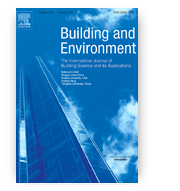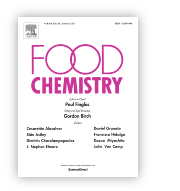
Research papers of the month – May
We present the highest-score research papers of May 2021.
Joost Van Hoof, Hannah R. Marston, Jan Kazak, Tine Buffel
Radosław Spychaj, Alicja Kucharska, Antoni Szumny, Dominika Przybylska, Ewa Pejcz, Narcyz Piórecki
Boris M. Popović, Bojana Blagojević, Alicja Kucharska, Dejan Agić, Nenad Magazin, Maja Milović, Ana Teresa Serra
Tadeusz Szmańko, Tomasz Lesiów, Justyna Górecka
Ten questions concerning age-friendly cities and communities and the built environment
Joost Van Hoof, Hannah R. Marston, Jan Kazak, Tine Buffel
Building and Environment
 The development of ‘age-friendly cities’ has become a major area of work in the field of ageing and the built environment. This movement is driven by the observation that cities are home to an ever-increasing ageing population. Over the past decade, a multitude of age-friendly initiatives have been developed with the aim of making physical and social environments more favourable for older people's well-being, health and ability to live in the community. This article explores ten key questions associated with the age-friendly cities and communities' movement, with a particular focus on the built environment. It provides an overview of the history of the age-friendly cities' movement and the underlying models, the aspects of the built environment that are relevant for age-friendly cities, the ways age-friendliness can be evaluated, and the interactions between age-friendly cities initiatives and other strategic agendas such as smart cities. The paper concludes by discussing future perspectives and possible directions for further development of the age-friendly movement.
The development of ‘age-friendly cities’ has become a major area of work in the field of ageing and the built environment. This movement is driven by the observation that cities are home to an ever-increasing ageing population. Over the past decade, a multitude of age-friendly initiatives have been developed with the aim of making physical and social environments more favourable for older people's well-being, health and ability to live in the community. This article explores ten key questions associated with the age-friendly cities and communities' movement, with a particular focus on the built environment. It provides an overview of the history of the age-friendly cities' movement and the underlying models, the aspects of the built environment that are relevant for age-friendly cities, the ways age-friendliness can be evaluated, and the interactions between age-friendly cities initiatives and other strategic agendas such as smart cities. The paper concludes by discussing future perspectives and possible directions for further development of the age-friendly movement.
10.1016/j.buildenv.2021.107922
Potential valorization of Cornelian cherry (Cornus mas L.) stones: roasting and extraction of bioactive and volatile compounds
Radosław Spychaj, Alicja Kucharska, Antoni Szumny, Dominika Przybylska, Ewa Pejcz, Narcyz Piórecki
Food Chemistry
 This study aimed to characterize the antioxidant potential, bioactive and volatile compounds of the stones from fruits of Cornus mas. Both fresh and roasted stones show a high antioxidant potential (166.48 – 509.74 μmol TE/g dw stones), which significantly depends on the cultivars. The roasted stones preserved 43.6% (DPPH; ‘Raciborski’) to 97.2% (FRAP; ‘Alesha’) of the antioxidant activity of the non-roasted stones. In the stones, two iridoids and ellagic acid were determined. During roasting, loganic acid remained stable, whereas cornuside was completely degraded. The analyses showed a 30-fold increase in the concentration of ellagic acid and in the formation of two of its derivatives. The major aroma compound of the roasted stones was furfural, but we also identified 18 pyrazine derivatives. This study is the first attempt to valorize Cornelian cherry stones via roasting. The roasted stones can be a coffee substitute, or aromatic and bioactive additions to cereal coffees.
This study aimed to characterize the antioxidant potential, bioactive and volatile compounds of the stones from fruits of Cornus mas. Both fresh and roasted stones show a high antioxidant potential (166.48 – 509.74 μmol TE/g dw stones), which significantly depends on the cultivars. The roasted stones preserved 43.6% (DPPH; ‘Raciborski’) to 97.2% (FRAP; ‘Alesha’) of the antioxidant activity of the non-roasted stones. In the stones, two iridoids and ellagic acid were determined. During roasting, loganic acid remained stable, whereas cornuside was completely degraded. The analyses showed a 30-fold increase in the concentration of ellagic acid and in the formation of two of its derivatives. The major aroma compound of the roasted stones was furfural, but we also identified 18 pyrazine derivatives. This study is the first attempt to valorize Cornelian cherry stones via roasting. The roasted stones can be a coffee substitute, or aromatic and bioactive additions to cereal coffees.
10.1016/j.foodchem.2021.129802
Exploring fruits from genus Prunus as a source of potential pharmaceutical agents – In vitro and in silico study
Boris M. Popović, Bojana Blagojević, Alicja Kucharska, Dejan Agić, Nenad Magazin, Maja Milović, Ana Teresa Serra
Food Chemistry
 Prunus fruits are recognized to be rich sources of polyphenols with health promoting effect. In this work we evaluated the phenolic profile and bioactivity, namely antioxidant capacity, antiproliferative effect in HT29, and inhibition capacity of α-glucosidase (α-Gls), α-amylase (α-Amy) and human dipeptidyl peptidase III (hDPP III) activities, of traditional Prunus fruits grown in Serbia. Fifteen Prunus samples were investigated and compared: common European plum and three old plum subspecies (‘vlaškača’, damson plum and white damson), purple-leaf cherry plum, red and white cherry plum, sweet cherry, sweet cherry-wild type, sour cherry, steppe cherry, mahaleb cherry, blackthorn, peach, and apricot. Principal Component Analysis highlighted steppe cherry and blackthorn as Prunus species with the highest bioactive potential. In silico analysis pointed out rutinoside derivatives of cyanidin and quercetin as the most potent inhibitors of α-Gls, α-Amy and hDPP III enzymes. Quercetin 3-O-rutinoside showed the highest binding energy to α-Gls (−10.6 kcal/mol).
Prunus fruits are recognized to be rich sources of polyphenols with health promoting effect. In this work we evaluated the phenolic profile and bioactivity, namely antioxidant capacity, antiproliferative effect in HT29, and inhibition capacity of α-glucosidase (α-Gls), α-amylase (α-Amy) and human dipeptidyl peptidase III (hDPP III) activities, of traditional Prunus fruits grown in Serbia. Fifteen Prunus samples were investigated and compared: common European plum and three old plum subspecies (‘vlaškača’, damson plum and white damson), purple-leaf cherry plum, red and white cherry plum, sweet cherry, sweet cherry-wild type, sour cherry, steppe cherry, mahaleb cherry, blackthorn, peach, and apricot. Principal Component Analysis highlighted steppe cherry and blackthorn as Prunus species with the highest bioactive potential. In silico analysis pointed out rutinoside derivatives of cyanidin and quercetin as the most potent inhibitors of α-Gls, α-Amy and hDPP III enzymes. Quercetin 3-O-rutinoside showed the highest binding energy to α-Gls (−10.6 kcal/mol).
10.1016/j.foodchem.2021.129812
The water-holding capacity of meat: A reference analytical method
Tadeusz Szmańko, Tomasz Lesiów, Justyna Górecka
Food Chemistry
 The water-holding capacity (WHC) of meat affects its characteristics and is a crucial criterion for assessing meat quality. However, there is no precise analytical method for determining meat WHC. This study aimed to develop a precise and widely applicable method to determine the WHC of turkey and pork samples. A filter-paper press method was used to present WHC as water content (%) before and after pressing (WHC1) or water content (%) after pressing relative to the fat-free dry matter components of the tested meat (WHC3). In cases where pressing released both fat and muscle juice, procedures to calculate WHC2 or WHC4 were applied. This increased the precision of WHC values calculated using formulas 1 and 3 (for WHC1 and WHC3 values, respectively). Expressing WHC as WHC3 ensured absolute precision in determining WHC. This study successfully developed a reference analytical method for accurately determining meat WHC.
The water-holding capacity (WHC) of meat affects its characteristics and is a crucial criterion for assessing meat quality. However, there is no precise analytical method for determining meat WHC. This study aimed to develop a precise and widely applicable method to determine the WHC of turkey and pork samples. A filter-paper press method was used to present WHC as water content (%) before and after pressing (WHC1) or water content (%) after pressing relative to the fat-free dry matter components of the tested meat (WHC3). In cases where pressing released both fat and muscle juice, procedures to calculate WHC2 or WHC4 were applied. This increased the precision of WHC values calculated using formulas 1 and 3 (for WHC1 and WHC3 values, respectively). Expressing WHC as WHC3 ensured absolute precision in determining WHC. This study successfully developed a reference analytical method for accurately determining meat WHC.
10.1016/j.foodchem.2021.129727










